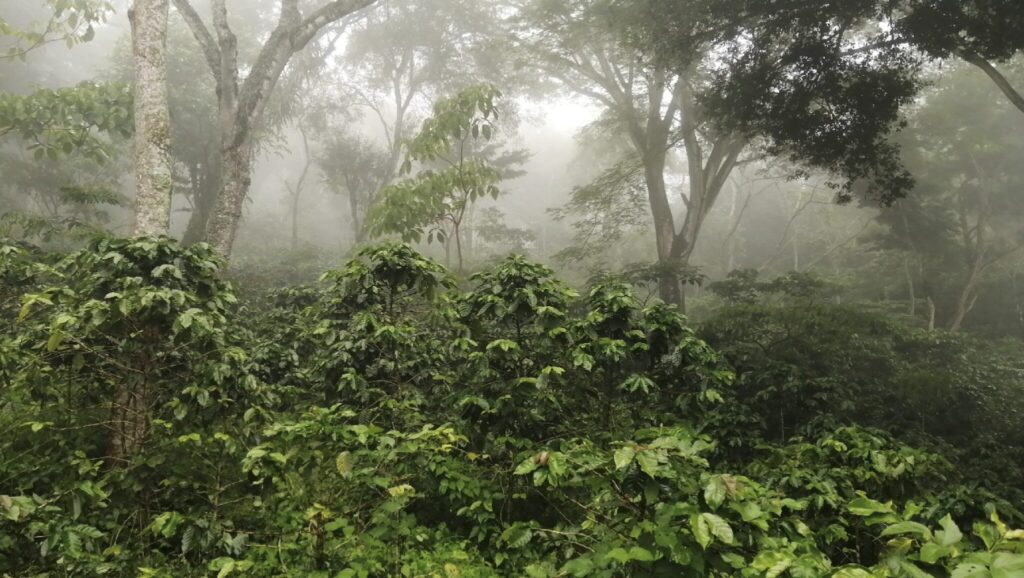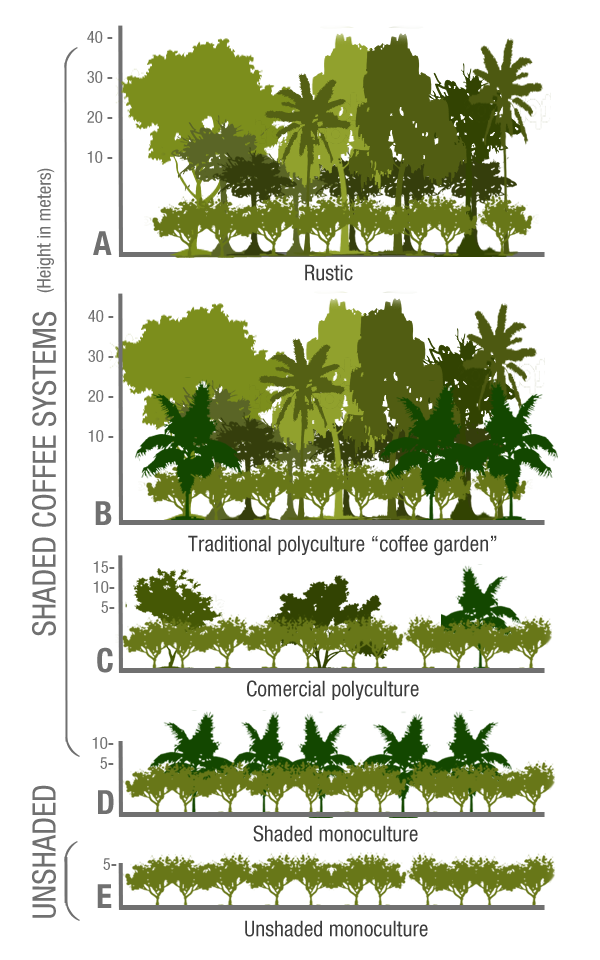Shade grown coffee
Coffee can be grown in shaded or full-sun conditions. Approximately 25% of the world’s coffee land is managed under diverse shade, 35% under partial shade, and 40% under full-sun conditions. In the last 50 years, the amount of coffee land under full-sun conditions has dramatically increased as farmers aim to boost yields by converting shade-grown farms or establishing new, full-sun plantations.
However, several coffee tree varieties, especially Arabica trees, which produce most of the world’s specialty coffee, naturally thrive in shaded environments. Consequently, many farmers still cultivate their coffee trees within natural or managed forest landscapes, a practice known as “agroforestry.”
Coffee produced on agroforestry farms is commonly referred to as “shade-grown coffee.” However, not all shade-grown coffee is identical. The level of shade coverage in agroforestry systems varies widely, ranging from densely shaded systems resembling mature forests to lightly shaded systems with just one or two types of shade trees.

In general, agroforestry farms can be categorized into the following three groups:
- Rustic: Coffee grown within the existing forest, replacing some native plants.
- Traditional polyculture: Coffee grown among native forest trees, intercropped with other tree and plant species, including fruit and vegetables for additional income.
- Commercial polyculture: Native trees removed for more space, with coffee grown mainly under planted timber and fruit trees.

Why is agroforestry coffee important?
Shade-grown coffee benefits farmers and the environment in the following ways:
Potential Livelihood Benefits
- Offers additional sources of income to farmers, such as fruit or wood.
- educes production costs, as less chemical inputs, like pesticides, are needed for shade-grown coffee.
- Increases long-term productivity, as coffee trees grown under shade have a longer lifespan compared to those grown in lightly shaded or full-sun conditions.
- Improves coffee quality, leading to higher prices for farmers, as shaded coffee trees produce slow-maturing, larger beans with better flavor.
- Grants access to specialty markets that offer premium prices for shade-grown coffee.
Potential Environmental Benefits
- Improve soil quality and root systems, preventing soil degradation and erosion.
- Capture and retain rainfall, reducing temperatures for heat-sensitive coffee trees.
- Attract birds, ants, and other natural pest control organisms to protect coffee crops.
- Help combat climate change by removing carbon from the atmosphere.
- (With substantial shade) Provide crucial wildlife habitat, particularly for migratory birds, making shade-grown coffee also known as “bird-friendly” coffee.
In general, denser shade provides greater environmental benefits. However, at high shade levels, there can be trade-offs between environmental advantages and livelihood benefits. Shade-grown trees have longer lifespans and better resilience to pests and diseases, but they typically produce fewer coffee beans compared to full-sun trees in a given year. This means farmers growing shade-grown coffee may have less coffee to sell. On the other hand, coffee grown in full-sun conditions can be of lower quality, and buyers may not pay premium prices for it. Coffee farmers need to find a balance between these trade-offs when managing their farms.
